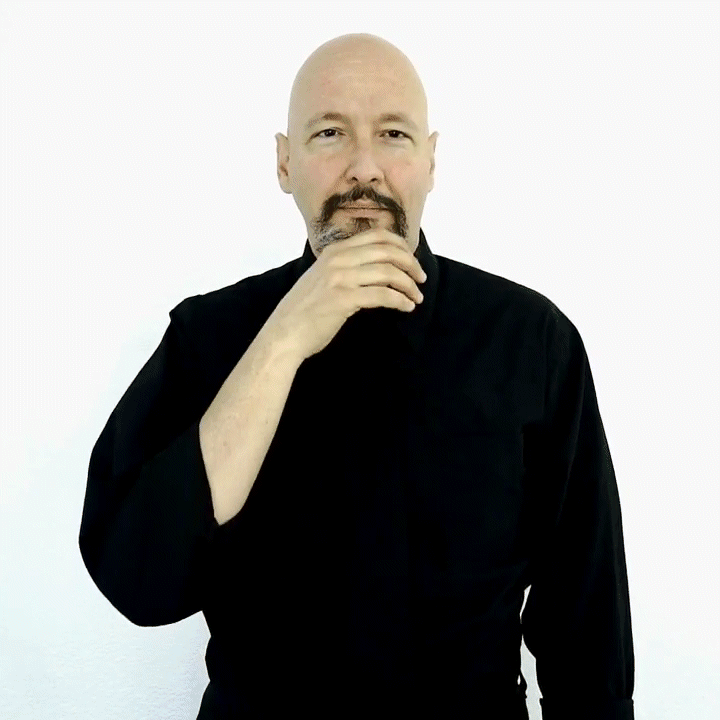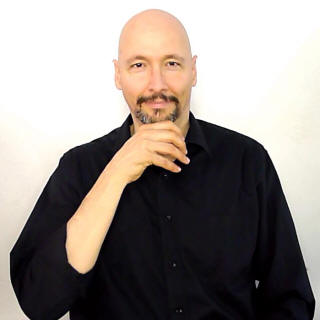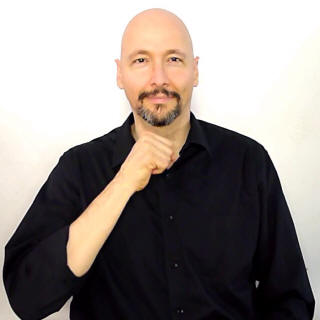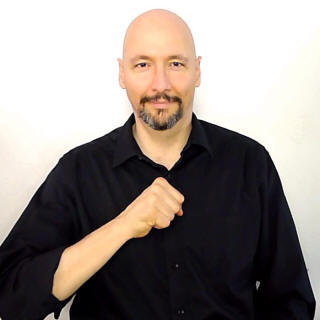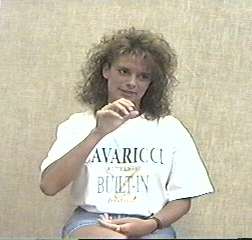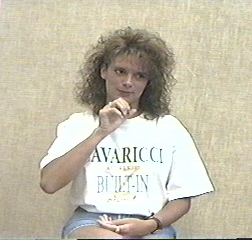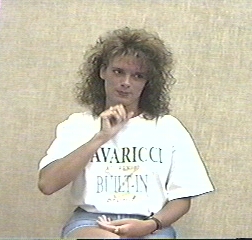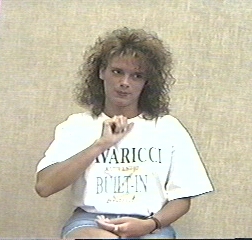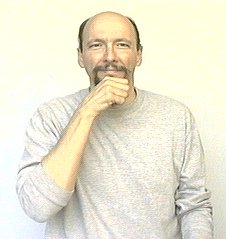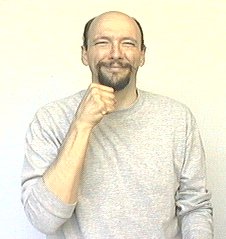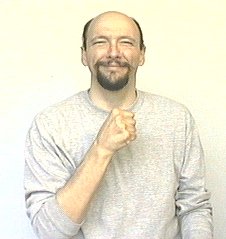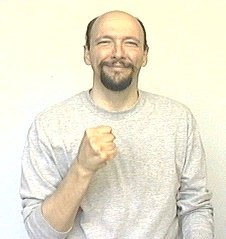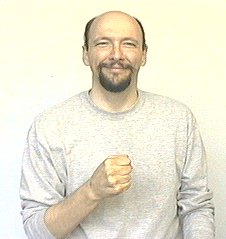The sign for "old" starts as a "C" hand and turns into an "S" hand as you pull it down from your chin.
OLD:
Rookie mistake:
Signing "very-OLD" when you wanted to ask "how-OLD."
"how-OLD" generally uses two quick little movements from the chin.
"very-OLD" uses one long sometimes wavy movement from the chin.
https://youtu.be/f69WYijc73c
Here's an example my friend Crystil doing a casual noun form of OLD.
Note the angle of her hand as she completes the sign. Also note how the fact that she has "somewhat" long fingernails also influences the sign. It is still a "C" / "S" but her fingers are more loose.
very-OLD:
You can modify the sign OLD to mean "very" old by using a larger movement with a side to side motion and more facial expression.
YOU how-OLD?If someone uses a "Wh" facial expression (eyebrows furrowed a bit) and signs "YOU OLD ?" They are not saying, "You are old." Rather they are asking "How old are you?"
Video: To play, click the small play button in the lower left hand corner of the video:
OPTIONAL READING (Not required for class.)
A student asked me how to do age-related signs. For example how to discuss people's ages.
* There is a lot of variety. It is important to note that if you observe several different Deaf people using age-related signs you are likely to see several different versions of those signs.
* We have to consider that often two or more people contribute separate parts of the meaningful whole.
Two people discussing "age" often work together to construct "meaning." (Dual Party Construction of Meaning). For example: Bob might ask Mary, "YOUR SON, how-OLD?" To which Mary might reply, "THREE." The whole age concept is "three years old." Bob contributed the sign "OLD" and Mary contributed the sign "THREE." So you have a single "concept" being created by two people. There is no need for Mary to repeat the sign "OLD" in her reply since Bob already introduced that concept.
* Mary is likely to simply hold up a "3" hand (palm back). Note, while signing "YOUR SON" Bob's eyebrows were up and his head tilted a bit forward. While signing "OLD" Bob's eyebrows were somewhat furrowed and his head tilted back ever so slightly so as to express the concept "old" as a question, "how old?" Bob didn't need a separate sign for "HOW" since it was expressed "non-manually" (without using his hands) via his eyebrows and head tilt while doing the sign OLD.
* Suppose Mary initiated the conversation and the concept of "age" hadn't been introduced into that conversation yet, it is likely that Mary would have signed, "MY SON, old-3." The "old-3" would have been expressed by touching the index finger of a "3" handshape to the chin and then moving the hand downward and outward. However, I have observed many Deaf people also signing this as "OLD 3" by using two separate signs: OLD and THREE.
* Classroom signing and real world signing are often very different. It is fine for a teacher to tell her students that the "right way" to sign "three years old" is to use the "old-3" sign which uses a single handshape and numerical incorporation. But we do need to be careful to recognize that if we were to go out into the real world and secretly videotape 100 Deaf people doing that sign, we would very likely see a number of them using two separate signs to express "OLD 3." What is "right" and wrong in a language is nothing more than what the crowd is and isn't doing. If the crowd does it long enough, the old grammarians die and new grammar texts grudgingly begin to include the newer forms.
* Certain variations of age-signs could be considered the product of assimilation rather than being examples of intentional numerical incorporation. By this I mean, since the sign "OLD" and the following number sign are done so close together we may in fact simply be seeing one sign assimilate characteristics of the other sign. This would be similar to the way you will sometimes see the sign "I" done with a "bent hand" when signing the phrase "I KNOW." The sign "I" in that case assimilates the handshape of the following sign, "KNOW." This process could be applied to age-signs which is to say a case could be made that the sign OLD is simply assimilating the handshape of the sign THREE because the two signs are so close in proximity.
* Not all numbers are created equally. Some numbers are more complex than others. For example, certain variations of numbers (e.g. 23, 25, 35), have internal movement. The more complex a number, the less likely we are to add even more complexity by using numerical incorporation.
* Some numbers have handshapes that are more conducive to touching the chin than others. It is slightly more difficult to touch your chin with the middle finger of the number "9" than it is to touch your chin with the index finger of the number "8." Those numbers which use the extended index finger are more likely to be touched to the chin that other numbers which do not extend the index finger.
Want to help support
ASL University? It's easy:
DONATE (Thanks!)
(You don't need a PayPal account. Just look for the credit card
logos and click continue.)
Another way to help is to buy something from the ASLU "Bookstore."
Want even more ASL resources? Visit the "ASL Training Center!" (Subscription
Extension of ASLU)
CHECK IT OUT >
Bandwidth slow? Check out "ASLUniversity.com" (a
free mirror of
Lifeprint.com less traffic, fast access)
VISIT >
You can learn
sign language (ASL) online at American Sign Language University ™
Lifeprint.com © Dr. William Vicars
